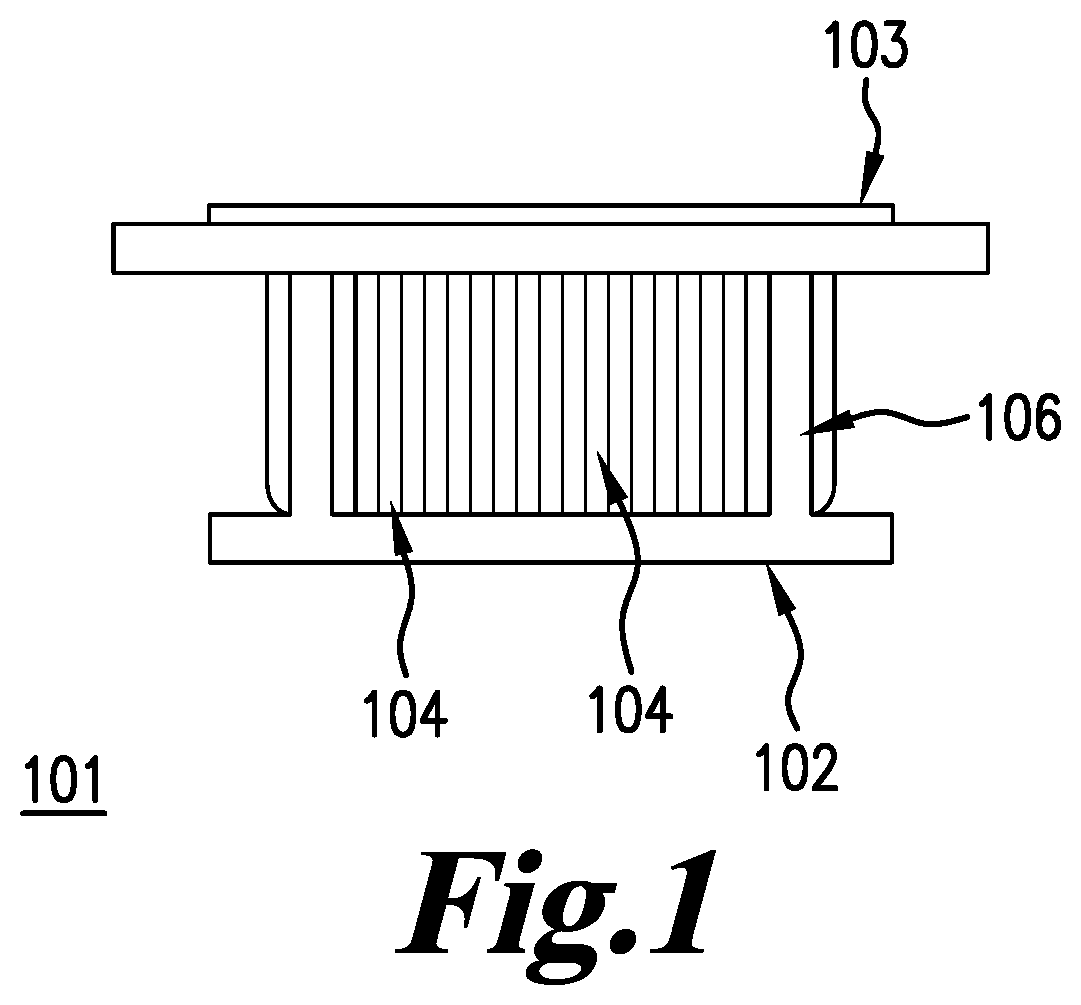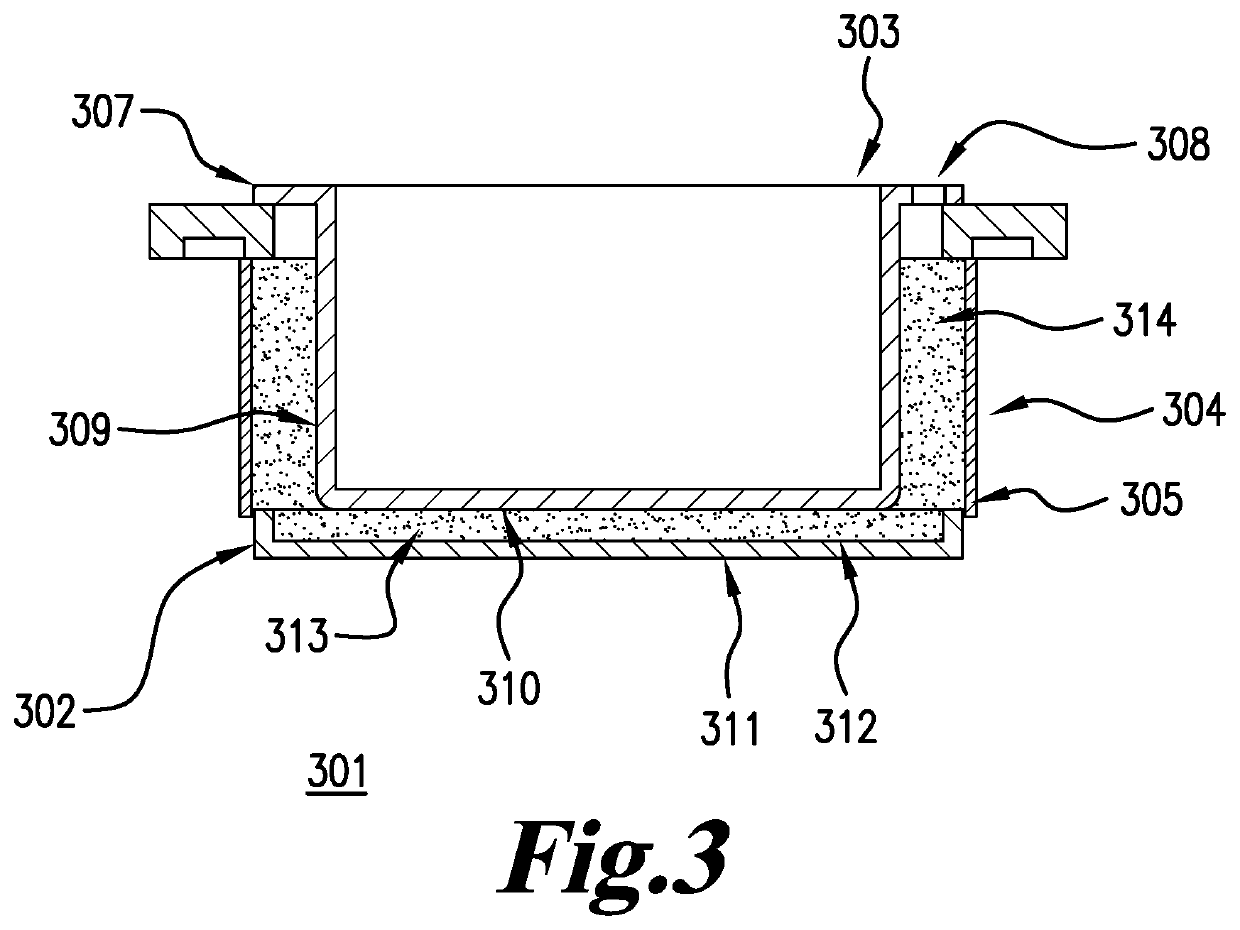Three dimensionally shaped biofabricated materials and methods of manufacture
a biofabricated material and three-dimensional shape technology, applied in the field of three-dimensional shape biofabricated leather materials, can solve the problems of objectionable socially conscious individuals to the use of animal skins to produce leather, environmental concerns of sheep skins, and significant pollution of air and waterways by livestock, so as to minimize time and waste
- Summary
- Abstract
- Description
- Claims
- Application Information
AI Technical Summary
Benefits of technology
Problems solved by technology
Method used
Image
Examples
example 1
[0080]A solution of collagen, as described above, was obtained. A female mold, as shown in FIG. 1 through FIG. 4, was made using polyethylene terephthalate (PET) polymer via 3D printer (Zortrax M200). The 3D printed PET polymer female mold was in the shape of a cylinder having a bottom. The dimensions of the female mold are 3 inches in diameter by 1 inch in height by ⅛ inch in thickness. A mesh (200×200 stainless steel woven mesh; McMaster-Carr) was attached with epoxy to the bottom and sides of the frame. A male mold, as shown in FIG. 1 and FIG. 2, was similarly made using PET polymer via 3-D printer (Zortrax M200). The 3D printed PET polymer male mold was in the shape of a cylinder having a bottom. The dimensions of the male mold are 2.7 inches in diameter by 1 inch in height by ⅛ in thickness. A 100 mL pipette was used to fill the bottom of the female mold with the collagen solution described above. Once the mold was filled to a ¼ inch height, the male mold was placed on top of t...
example 2
[0081]A solution of collagen, as described above, was obtained and blended at 60° C. with polycaprolactone (50:50 by weight). A left mold and a right mold were made from steel. The left mold contains an outer surface and a concave inner surface. The right mold contains an outer surface and a convex inner surface with a port extending from the outer to the inner surface. The molds were tooled to have a cavity in the shape of a horse saddle and include ejection pins. The molds are mechanically held together and heated to 60° C. The collagen solution is fed through an extruder to fill the cavity between the left and right mold. The molds are held at 60° C. for 1 minute and then allowed to cool to room temperature. Once cooled the left and right molds are separated and the ejection pins are utilized to release the sample from the molds.
example 3
[0082]A solution of collagen, as described above, was obtained and blended at 60° C. with polycaprolactone (50:50 by weight). The warmed mixture is distributed on a surface to achieve an ⅛-inch thickness, then dried and cooled into a sheet for thermoforming. The dried and cooled sheet is then placed on a Formech thermoforming machine having a mold in the shape of a snowman. The sheet is heated to 60° C. The snowman mold is pushed up into the sheet and a vacuum is created in order to form the sheet onto the surface of the snowman mold. The shaped sheet and the mold are then cooled to room temperature and the shaped sheet is removed from the surface of the snowman mold.
PUM
| Property | Measurement | Unit |
|---|---|---|
| Temperature | aaaaa | aaaaa |
| Temperature | aaaaa | aaaaa |
| Temperature | aaaaa | aaaaa |
Abstract
Description
Claims
Application Information
 Login to View More
Login to View More - R&D
- Intellectual Property
- Life Sciences
- Materials
- Tech Scout
- Unparalleled Data Quality
- Higher Quality Content
- 60% Fewer Hallucinations
Browse by: Latest US Patents, China's latest patents, Technical Efficacy Thesaurus, Application Domain, Technology Topic, Popular Technical Reports.
© 2025 PatSnap. All rights reserved.Legal|Privacy policy|Modern Slavery Act Transparency Statement|Sitemap|About US| Contact US: help@patsnap.com



